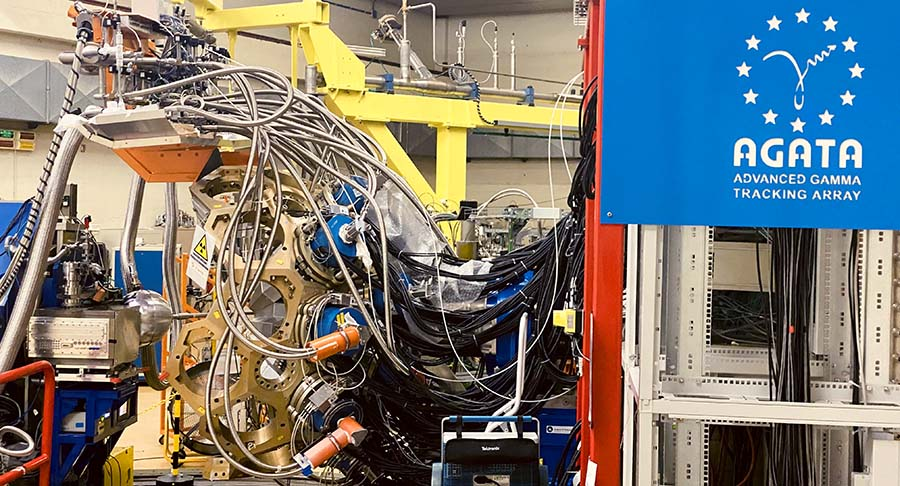Orateur
Description
Report on the AGATA experiment number 23.061
Spokespersons: M. Zielińska, F. Ercolano, N. Marchini, J.J. Valiente Dobón
In this talk, I will report on the recent “Combined lifetime and transition-probability measurements in 96Zr via Coulomb excitation” experiment, conducted using the AGATA + PRISMA + Plunger detector setup during the May 23-29, 2024 beamtime. The primary aim of the experiment was to deduce the E2 and E3 transition strengths in 96Zr by analyzing cross-sections measured in both safe and unsafe Coulomb excitation, as well as to provide deeper insights into octupole collectivity in 96Zr. Our specific objectives included verifying the placements of the 4+ band members, investigating the previously reported anomalously large B (E3;3-> 0+) strengths, understanding the properties of the lesser known third 2+ state, independently evaluating the transition strengths from this state and exploring the postulated two-octupole-phonon nature of the 6+ state. I will review our initial expectations outlined in our experiment proposal and discuss the extent to which these objectives were met during the May 2024 beamtime, highlighting the challenges encountered. This will include some spectra from the online analysis conducted during the experiment. Additionally, I will reflect on my progress in data analysis since the experiment, including my ongoing efforts to understand and address the neutron damage corrections required for each of the AGATA crystals. Meanwhile, Damiano Stramaccioni from INFN-LNL and University of Padova is analysing this data in parallel, aiming at the extraction of lifetimes. Moving forward, a key objective of this project is to assess the reliability of unsafe Coulomb excitation in obtaining transition strength from measured cross-sections, which could be crucial for compensating for low RIB intensities in future experiments.

